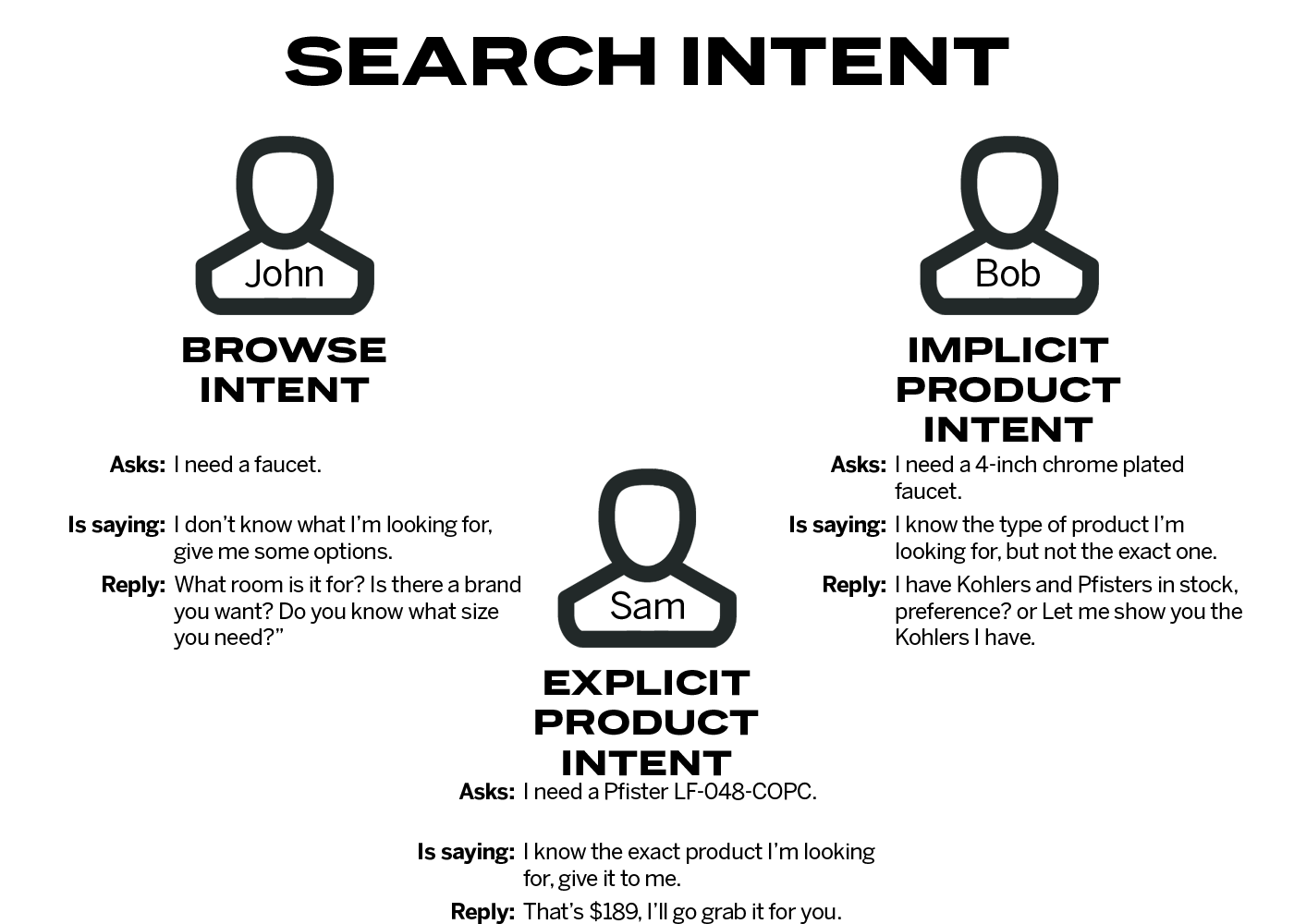14 Focus Points - B2B eCommerce
What is Search Intent?
Tuesday, December 12, 2023
Layer One - Director of Sales Solutions - David Schmidt

John, Bob, and Sam each walk into a branch throughout the day and head to the counter.
Each of them tells the counter rep something slightly different:
John: “I need a faucet.”
Bob: “I need a 4-inch chrome plated faucet.”
Sam: “I need a Pfister LF-048-COPC.”
Any counter rep knows exactly what to do next even with that extremely limited information.
So they reply differently to each, they say to:
John: “What room is it for? Is there a brand you want? Do you know what size you need?”
Bob: “I have Kholers and Pfisters in stock, preference?” or “Let me show you the Kohlers I have.”
Sam: “That’s $189, I’ll go grab it for you.”
While they’re all asking about faucets, they want the counter rep to provide a different type of assistance. This is common sense and intuitive to us, but it’s not to a website’s search engine.
Imagining these were now inputs in the search bar, most websites will give Sam exactly what he wants. Bob is sometimes taken care of by showing filtered results based on his given criteria. But John is in bad shape.
John’s experience is the real-life equivalent of the counter rep grabbing every faucet (plus pictures of out-of-stocks) and dumping them all on the counter. John might pick up a couple and look them over, but he’ll most likely feel overwhelmed and leave without purchasing.
This is because search by default is configured just to return the best possible results given the search terms. They are not set up to handle “Search Intent”.
Whether at the counter or on a website, each is communicating a different Search Intent:
John = Browse Intent: I don’t know what I’m looking for, give me some options.
Bob = Implicit Product Intent: I know the type of product I’m looking for, but not the exact one.
Sam = Explicit Product Intent: I know the exact product I’m looking for, give it to me.
So even though their requests or search queries are very similar, each is interacting with the website for a different reason, this is their search intent. The search intent then informs what they want to be shown or assisted with.

Understanding a shopper’s search intent is critical to conversions. Just like an in-person counter rep, a website should know what someone is actually asking. Further, not returning the desired experience for Browse Intent and Implicit Product Intent directly leads to bounces and lost sales.
Empower Search is the fourth of Layer One's
To see the other 13, get the B2B eCommerce Distributors Success Guide!
Interested in learning more?
Contact Us